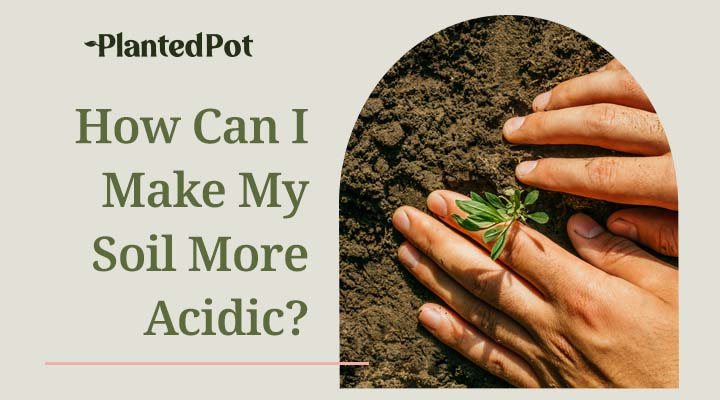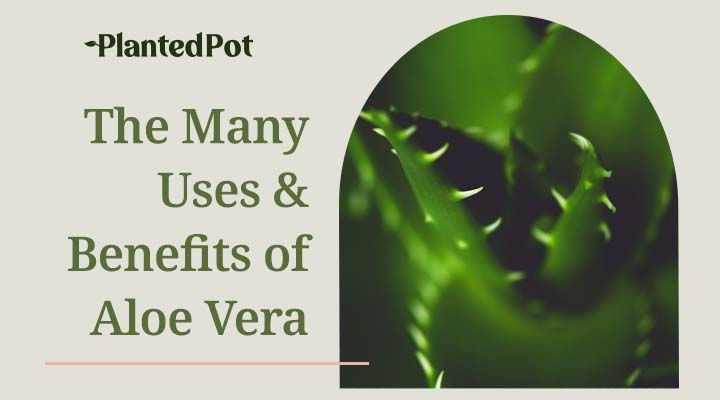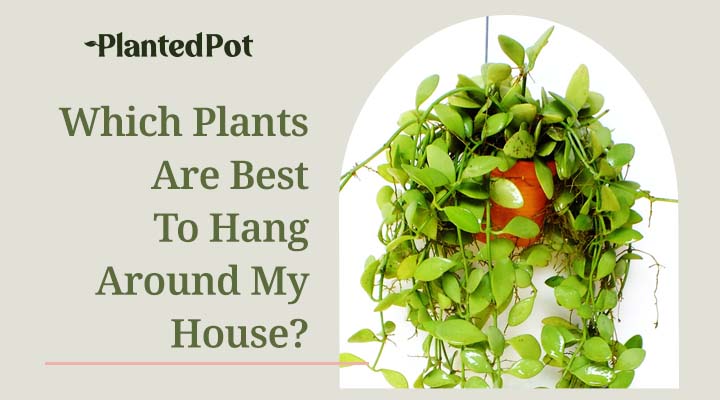
House Plant Fertilizer: Nutrients To Make Your Plants Thrive
Home / House Plant Fertilizer: Nutrients To Make Your Plants Thrive
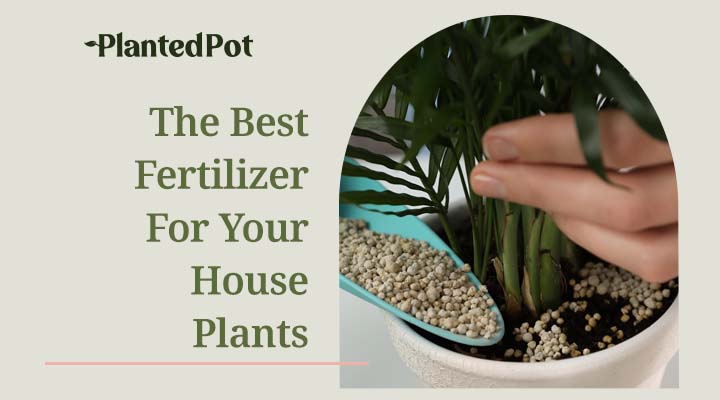
House Plant Fertilizer: Nutrients To Make Your Plants Thrive
- Greg Poblete
- October 8, 2021
- 9:19 am
- No Comments
The process of taking care of plants can sometimes be overwhelming. You may have difficulty figuring if you are watering your plant too much or too little and whether it’s getting enough sunlight. But one of the most important aspects of gardening is finding the right house plant fertilizer.
People may often forget the importance of fertilizing indoor plants. However, feeding your plants is an essential part of helping them grow into healthy plants. With outdoor gardening, many plants receive natural nutrients from the rain and other plants surrounding them. But houseplants need a little bit of fertilizer to ensure they are receiving the best possible care. Let’s look at what house plant fertilizer is, what it’s made of, how it works, and much more!
What is Fertilizer?
Fertilizer is a mix of ingredients or materials added to soil to help a plant grow. Various types of fertilizers have different specialties, such as fertilizing indoor plants or outdoor plants. Some fertilizers are designed specifically for certain plants and environments.
Fertilizers contain different materials such as nitrogen (N), phosphorus (P), and potassium (K). You can use these fertilizers for different outdoor and indoor plants, helping them grow big and strong. There are three main groups fertilizers that can be categorized as:
- Mineral Fertilizers: This type of fertilizer contains phosphorus and potash and is mined from the environment to be added to the soil.
- Organic Fertilizers: This fertilizer is composed of manure and compost, usually animal feces, and plant or animal composed matter.
- Industrial fertilizer: These fertilizers can contain many different ingredients such as ammonium phosphate, urea, and ammonium nitrate. Industrial fertilizer is produced industrially by humans through a series of chemical reactions.
The most commonly used fertilizer today is industrial fertilizer. However, mineral and organic fertilizers have been used for a long time and have shown much success in flowering plants and crops.
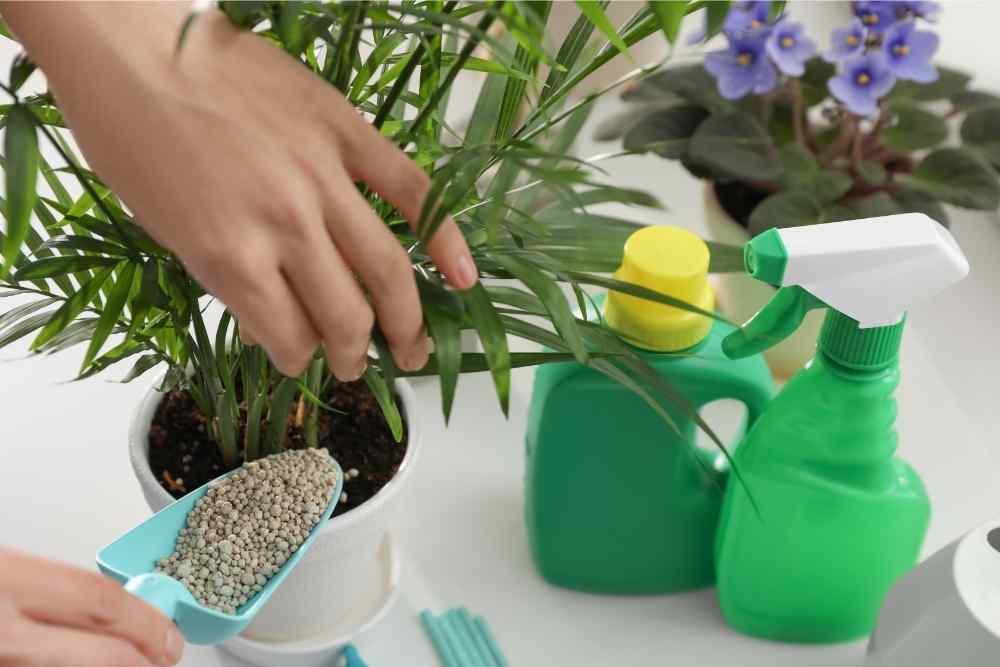
What is House Plant Fertilizer?
Like fertilizer for outdoor plants, house plants need fertilizer to grow big and strong. House plants need water and proper lighting to grow, but they also need a few extra nutrients. This is where the house plant fertilizer comes in. House plant fertilizers distribute nutrients through the soil, depending on the type of fertilizer you buy.
There are a few different types of houseplant fertilizers, such as liquid fertilizer, granular fertilizer, and slow-release fertilizer. Each of these is used differently and may benefit different types of plants for their specific needs. Some fertilizers may need to be added to your plant more often than others, and other fertilizers may only be needed to be added every once in a while.
Although feeding your indoor plants might sound like a daunting task, most common house plants have the same fertilizer requirements. There is nothing to worry about regarding fertilizing as long as you are sticking to a schedule that works for your particular indoor plants.
What’s In House Plant Fertilizer?
The most common mix of macronutrients used to fertilize houseplants is nitrogen (N), phosphorus (P), and potassium (K). The ratio of these nutrients in fertilizers may differ from each package, but house plants typically do best with a balanced ratio or a mix with a higher nitrogen number. When comparing different fertilizers and the ratios of the mixes, here are a few things you should keep in mind:
- Nitrogen (N) helps promote healthy foliage growth.
- Phosphorous (P) helps plants grow bigger and encourages a healthier bloom.
- Potassium (K) promotes a strong room system.
There are also other nutrients included in different fertilizers that are not chemically synthesized. For example, liquid organic houseplant fertilizer mixes may include liquid kelp, fish emulsion, compost tea, worm tea, liquid bone meal, plant extracts, humic acids, and other ingredients. Granular fertilizer may include worm castings, bone meal, sulfate of potash, limestone, and other animal, mineral, and plant-based ingredients.
It is always best to check the ingredients list of any fertilizer you buy to ensure your indoor plants receive the best nutrients they need to grow. Some fertilizers may include all organic and eco-friendly materials, while others may not.
How Does House Plant Fertilizer Work?
As water and lighting are important for a house plant to grow, fertilizer also helps boost essential nutrients to your plant’s soil. Fertilizer helps indoor plants regain the nutrients they may have lost over time as the plant continues to grow. A few types of fertilizers are applied in different ways, but they are all used to promote the wellness and growth of your indoor plants.
Some plants, such as recently potted plants or low-light setting plants, do not require fertilizer. But generally, adding fertilizer to your indoor plants is beneficial. Always take time to look at the ingredients and instructions labeled on the packaging.
If you fertilize indoor plants too much, this can scorch its leaves and kill the plant. There are also environmental concerns when over-fertilizing your plants because the nutrient solutions can get into water supplies. Although you may want to provide as many nutrients as possible to your plant, overfeeding your plant is typically worse than not giving your houseplant enough fertilizer.
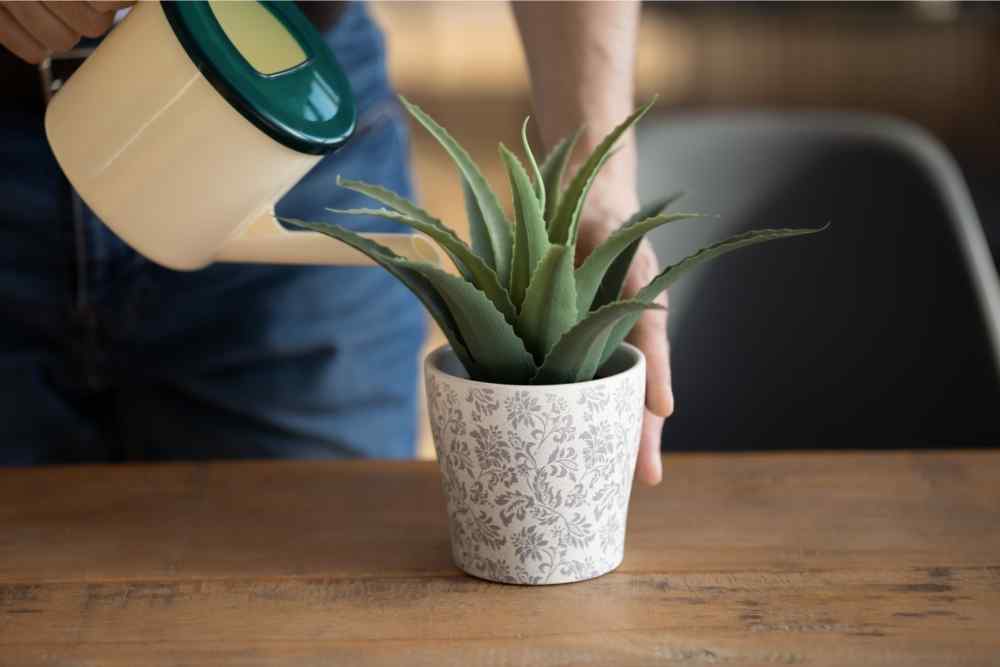
Types of House Plant Fertilizers?
When it comes to fertilizers for indoor plants, they generally fall into three categories: liquid fertilizer, granular fertilizers, and slow-release fertilizers. There are advantages to using certain kinds of fertilizers and how effective they provide nutrients to specific indoor plants.
Liquid Fertilizer
You can add liquid fertilizers to water when you are using a watering can. Depending on the kind of liquid fertilizer you have, you may fertilize your indoor plants every time you water or every other time. The amount you fertilize your plant also depends on the type of plant you are feeding. Typically plants with a very dramatic large bloom may need more feeding than smaller plants.
Liquid fertilizers are great at providing a steady supply of nutrients that you can control. They are easy to use to fertilize houseplants when you set up a schedule to feed them.
Granular Fertilizer
Granular fertilizers are made of dry pellets that are mixed into the potting soil by hand. These fertilizers are typically common for outdoor plants, but you can also use this method on certain indoor plants. With this method, all of the nutrients are dumped into the soil at once when the pot is watered, making it difficult to control how much fertilizer your plant is receiving. This is not the ideal choice for flowering plants indoors, but it is relatively inexpensive.
Slow-Release Fertilizer
Slow-release fertilizers are exactly what they sound like. This is a fertilizing product that releases nutrients into the soil gradually rather than all at once. Slow-release fertilizers are made with pellets that have a coating of different thicknesses that dissolve at different rates into your plant’s soil. This allows your plant to receive the nutrients from the fertilizer over time, so you do not have to constantly be feeding your plant. Although this method of fertilizing can be a bit costly, it can be rewarding due to how long it lasts.
Do All House Plants Need Fertilizer?
Generally speaking, all house plants need some process of receiving nutrients to grow. Whether your indoor plants receive their nutrients from absorbing water and carbon dioxide, they will find a way to get the plant food they need to survive.
However, fertilization guarantees that your indoor plant is receiving the nutrients it needs through the soil minerals. And depending on the type of indoor plant you have, it may need a little bit of fertilizer to fully absorb all the nutrients it needs to survive.
Fertilizers provide nutrients like nitrogen, phosphorous, and potassium. These nutrients are best delivered via fertilizer. The fertilization process provides plants with the essential macro-nutrients that the plants cannot absorb from the air or watering.
Can I Make My Own House Plant Fertilizer At Home?
If you want to make your own house plant fertilizer, you can use a lot of things around the house. Making your own fertilizer can be cost-efficient and provide plenty of benefits for your indoor plants. Here are some ingredients that you can use:
- Eggshells: Instead of throwing away your eggshells immediately, you can crush them and add them to a pot of boiling water. From there, let them simmer overnight and then strain the water. You can add the shells to your plant’s soil for a calcium boost when you are finished.
- Coffee grounds: Coffee grounds are great for acid-loving plants such as ferns. Make an equal mixture of coffee grounds and tap water, and you have a perfect fertilizer containing plenty of potassium and magnesium for your plant to grow!
- Aquarium water: If you have a fish tank at home with freshwater, you can share this water with your plants. The fish waste is actually good for your plants! However, do not use water if the tank has saltwater.
- Epsom salt: If you have a package of Epsom salt somewhere in your home, this is a great source of magnesium and sulfate to keep your plants green and lush. Add a tablespoon of Epsom salt in a gallon of water and give it to your plants to help them flourish.
When Do I Need to Feed My House Plant?
The number of times you should fertilize indoor plants varies on the type of house plant and fertilizer you are using. It is always best to look at the instructions of any fertilizer to understand how often you should be feeding your plant.
Generally, your plants are actively growing the most during the spring and the summer. This is the ideal time to fertilize, so they receive the nutrients that they need to continue growing. Some house plants may need heavy fertilization, while others may only need a small amount. There are also slow-release fertilizers that do most of the job for you by gradually releasing nutrients to the plant rather than all at once.
Final Thoughts – House Plant Fertilizer
Finding the best fertilizer for your indoor plants does not have to be a stressful task. There are a lot of fertilizers that are simple to use to feed your plants. There are also plenty of ingredients you may have around your home that you can use as fertilizer. Providing your plants with the nutrients they need will help them to grow and stay healthy. No matter what indoor plant fertilizer you use, always be patient with your delicate house plants and know that gardening is never a sprint but a marathon.


